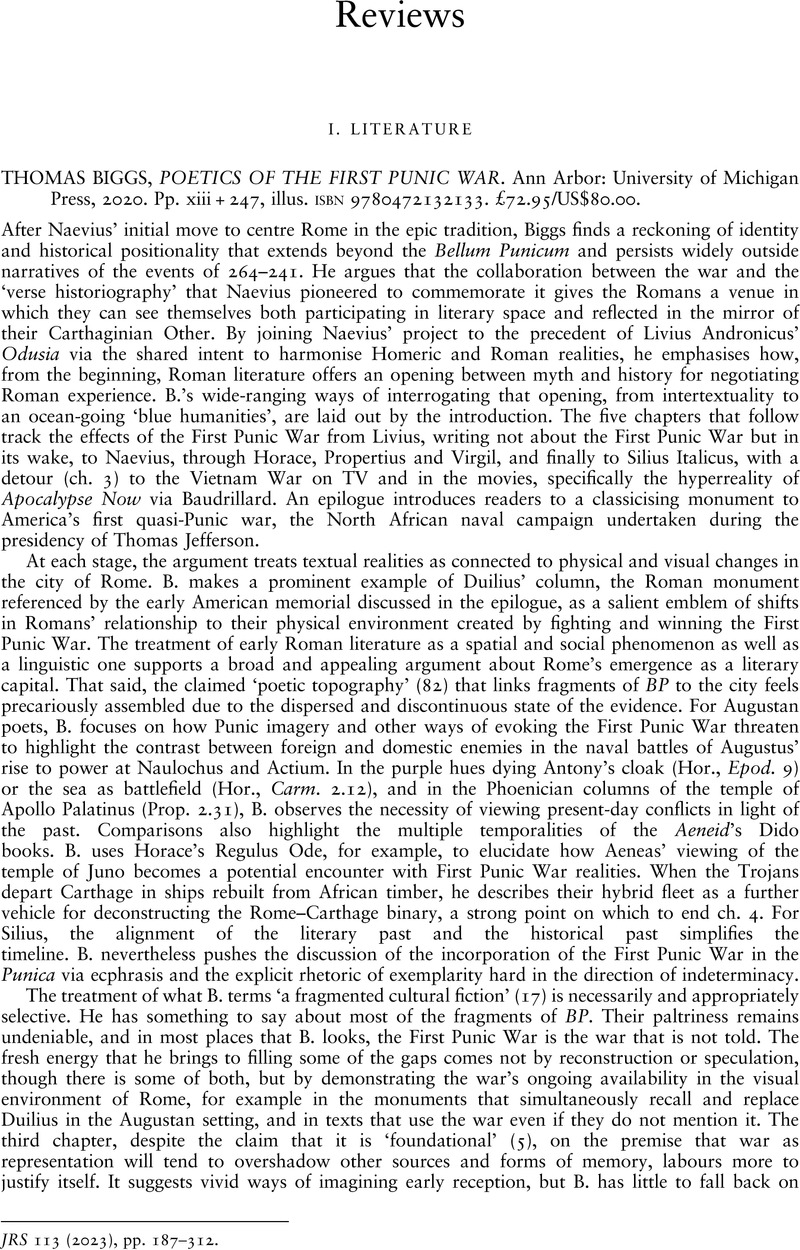No CrossRef data available.
Article contents
THOMAS BIGGS, POETICS OF THE FIRST PUNIC WAR. Ann Arbor: University of Michigan Press, 2020. Pp. xiii + 247, illus. isbn 9780472132133. £72.95/US$80.00.
Review products
THOMAS BIGGS, POETICS OF THE FIRST PUNIC WAR. Ann Arbor: University of Michigan Press, 2020. Pp. xiii + 247, illus. isbn 9780472132133. £72.95/US$80.00.
Published online by Cambridge University Press: 15 May 2023
Abstract
An abstract is not available for this content so a preview has been provided. Please use the Get access link above for information on how to access this content.

- Type
- Reviews
- Information
- Copyright
- Copyright © The Author(s), 2023. Published by Cambridge University Press on behalf of The Society for the Promotion of Roman Studies


